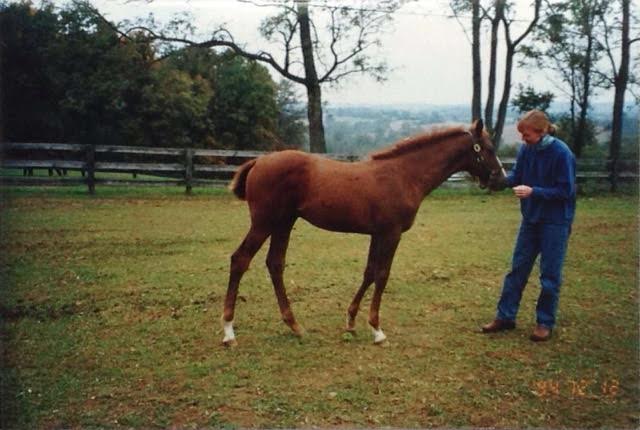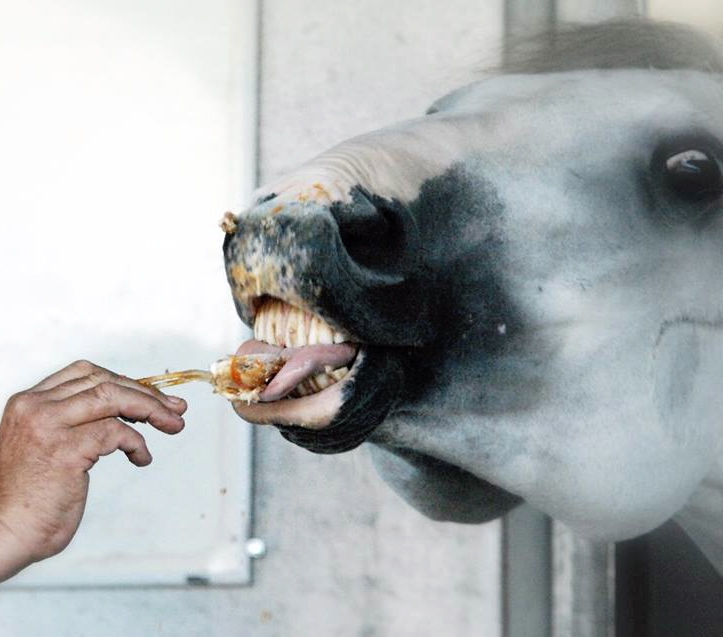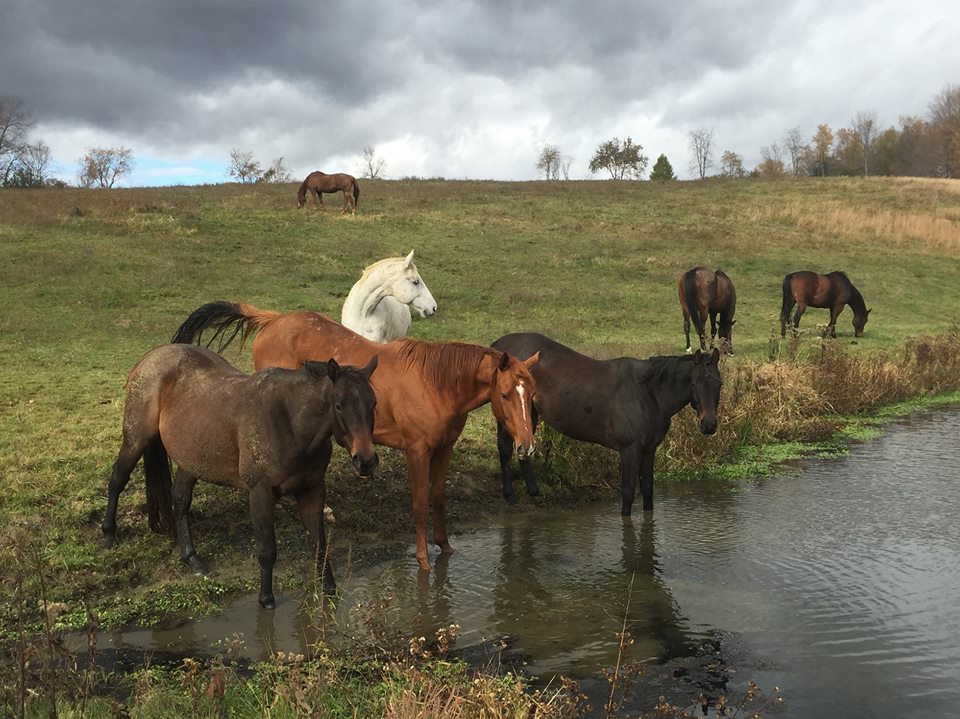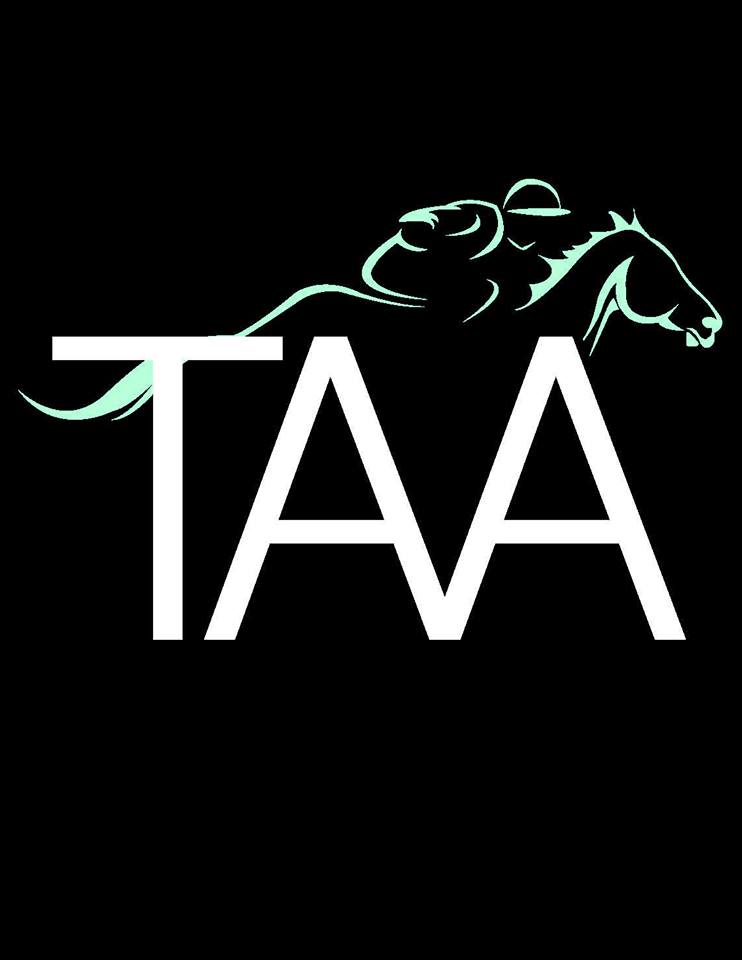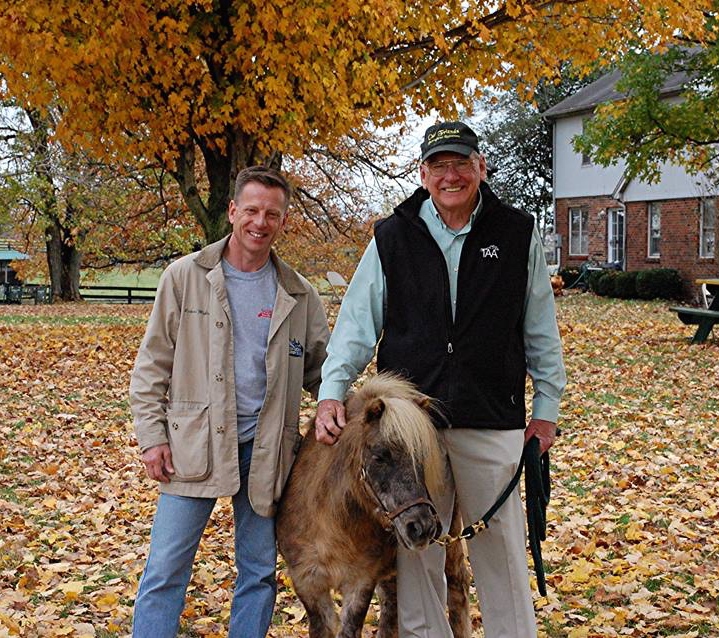On the track, Filibustered had a reputation for getting into so much mischief that by the time he left racing he’d earned the nickname “Busted.”
He’d been caught so often doing things a well-mannered racehorse just shouldn’t be doing.
Though stories of his racetrack antics were forgotten, his unusual shenanigans continued to create a buzz and backstory about a horse who raised a few eyebrows on his way to becoming a show jumping star who did things “his way.”
Like the time he became annoyed with something only he could fathom, then pulled to a stop and proceeded to lie down with his rider sitting dumbfounded on his back.
Filibustered
Show name: House Rules
Barn name: Jake
Sire: Housebuster
Dam: Unscathed, by Explosive Wagon
Foal date: June 12, 2004“Before I rode him, this girl had him, and nobody could figure out why, but he would lie down, groan, get back up and act like nothing had happened,” says Michigan equestrian Kassidy DiPierro who rides and trains the chestnut OTTB for owner Tracie Taylor. “He seemed to do it after she’d been away traveling.”
By the time DiPierro hitched up her truck and trailer in 2010 and drove to New Jersey to try the much-discussed horse for herself, she was a woman on a mission to find a project horse, but she also had her eyes open.
“He’s not everybody’s ride,” DiPierro admits. “But, after I tried him and took him over a few jumps, I knew I had to have him. I’ve had so many friends ask me what I’m doing with this horse because he still has his quirks, but there’s just something about him that I love. I was looking for a project … I was also hoping for an upper level horse.”
She got what she wished for. And some of what she didn’t.
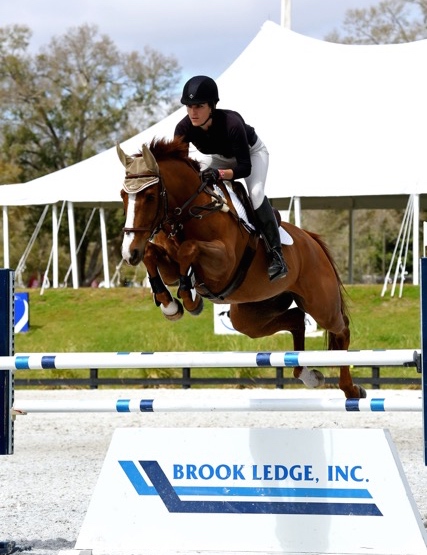
Filibustered, pictured at HITS Ocala 2015, has proven to be a skilled and beautiful jumper at the trot. Photo by ESI Photography and courtesy DiPierro
Shortly after starting with Filibustered in the fall of 2010, the struggle began.
Early on, she had trouble keeping the weight on him, and his attitude occasionally dissolved into temperamental outbursts, which included head shaking and bucking. And forget about trying to catch him in his field. For their first several months, catching Filibustered was like trying to catch a gazelle.
“It was very frustrating in the beginning. Early on I wanted to Event him and spent about a year and a half trying to do that. He did well in the cross country and the show jumping, but the dressage was difficult, and this is when he’d shake his head and buck,” she says. “This is when I learned I had to choose my battles and learn to play to his strengths.”
But while dressage work was too strenuous, jumping turned out to be his strong suit.
So she ditched her Eventing goals, began training with Grand Prix Show Jumper Ian Silitch, and has learned how to channel the power of a horse so sensitive and so aware, that he would notice if the show-ring flower boxes were moved from their usual spot.
The most important lesson learned from the top rider was to embrace her horse’s quirks, and to trust the animal’s judgment. Even if it meant letting him do things his way.
Nowhere was this approach more evident as it was in the highly competitive jumper world of the 1.30-meter fences.
While all the top-dollar, Warmblood show horses are cantering their fences in their musically rhythmic gait, DiPierro’s OTTB tackles many fences at the trot.
That’s right. The trot.
“When I first started training with Ian and I explained that he liked to trot the fences, he was like, let him do it, if he does it well. As much as my heart stops a little bit, and always clears them, and he jumps beautifully,” she says. “I think he needs the extra time to look at things and to size up the jump. I’ve learned to channel that, and let him be who he is.”
And in return, Filibustered has returned her trust in spades. In the show ring, he “busts a move,” finishing in the top 10 against strong competition. This past winter in Ocala, he took 9th in the 1.30 meters, and finished 5th in the 1.30 meter HITS Culpeper Show.
Though it can be a little scary approaching a jump at the trot— “Sometimes I just grab mane and hope for the best,” she says— the rewards have far outweighed the struggle.
“In the beginning, he was a hard keeper. I used to have trouble keeping weight on him. But as soon as we started show jumping, he put on weight and now I have trouble keeping his weight down. He loves his work,” she says. “The biggest thing I’ve learned is that I have to let my horse be who he is, even if that means trotting the fences.”
In the video: Filibustered canters most of the jumps at HITS Ocala, but throws in a trot move midway through.

